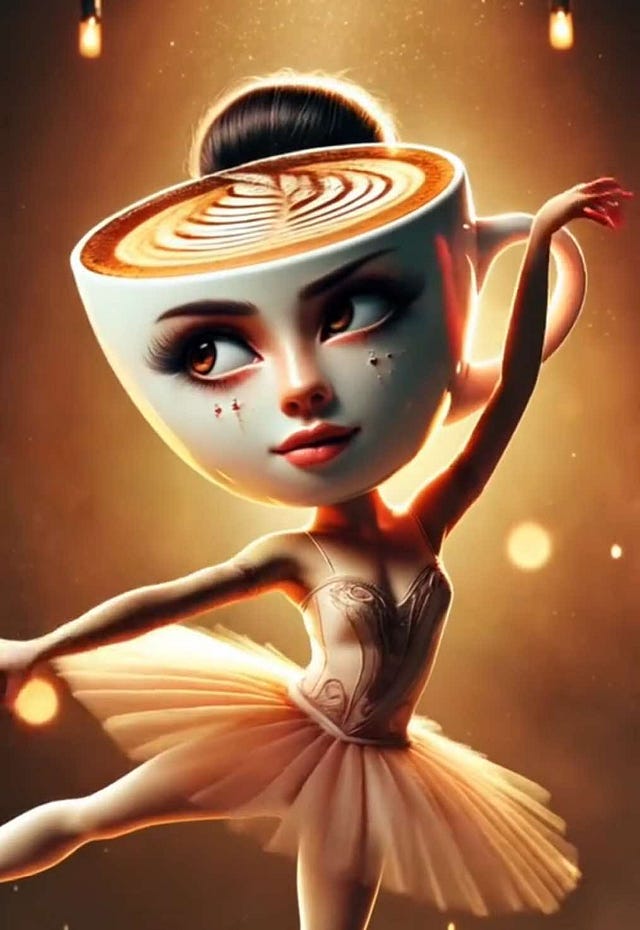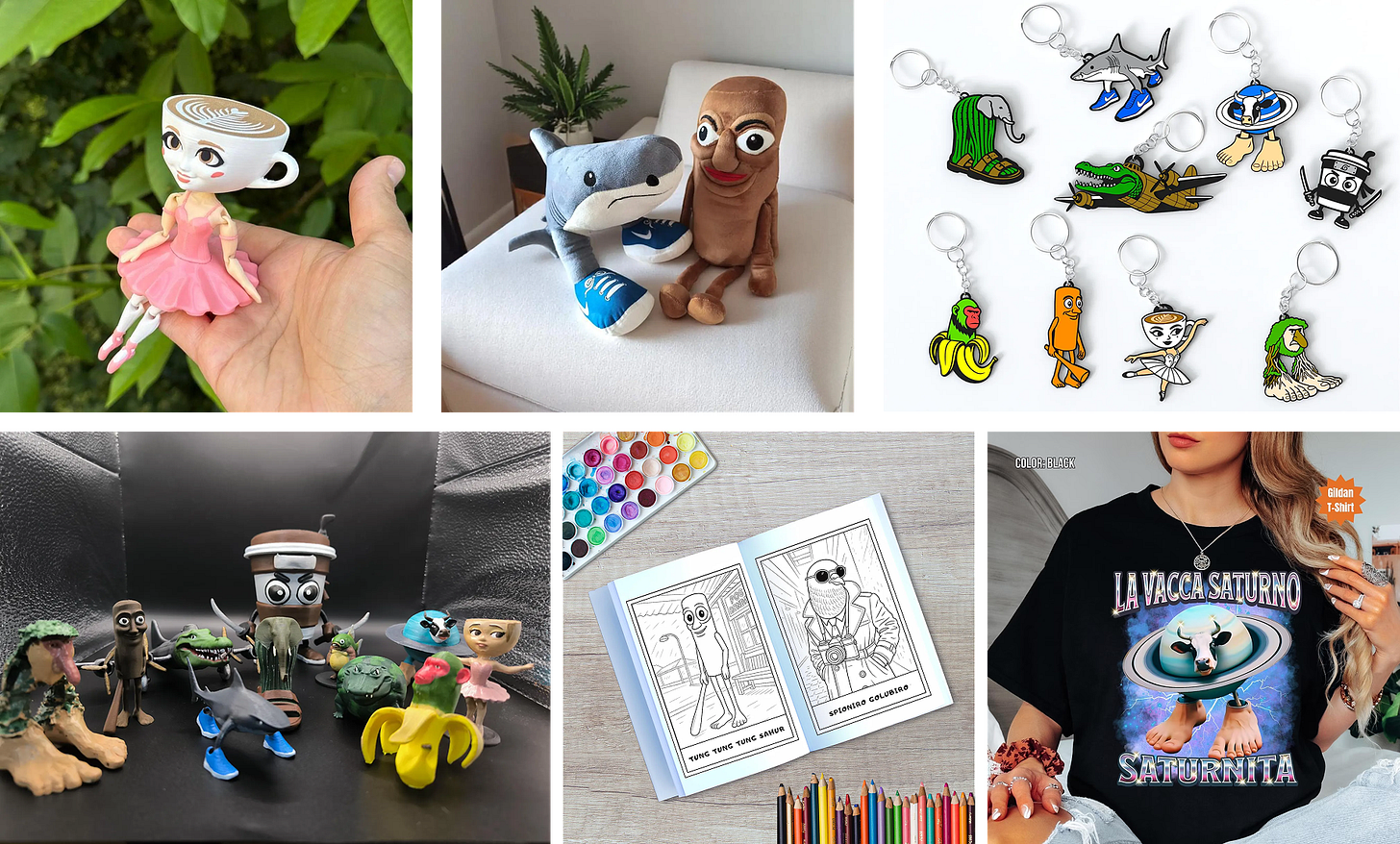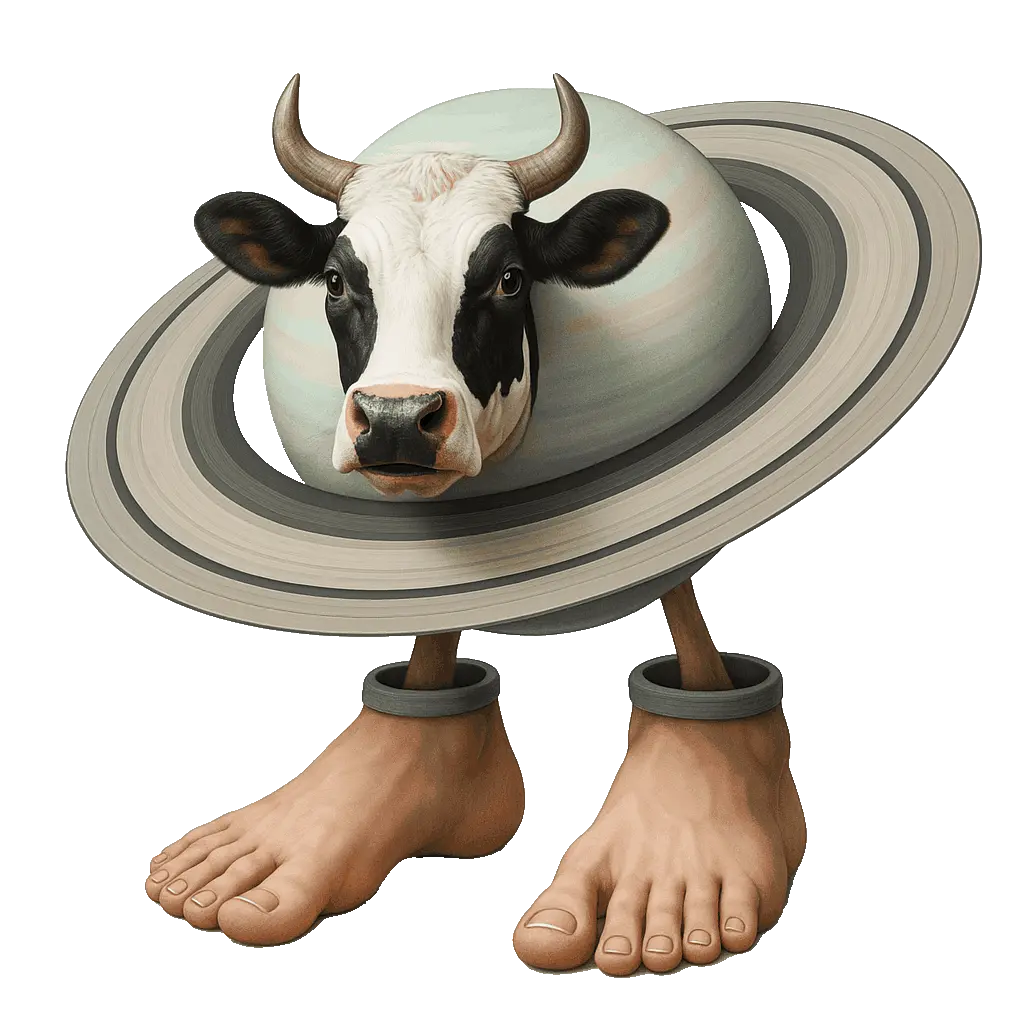Bombardiro Crocodilo, Tralalero Tralala, Ballerina Cappucina—“Italian brainrot” memes have captivated the internet, and they perfectly illustrate our relation with AI’s ‘creativity’.
What is Italian brainrot?
If you’re not terminally online, spending hours a week swiping through Reels, Shorts, or TikToks, you may be unaware of the AI-assisted meme phenomenon that has taken 2025 by storm.
The Italian brainrot memes consist of AI-generated images and videos that feature animals and objects combined with other animals or objects. For example, La Vaca Saturno Saturnita is part cow and part Saturn, the planet. Lirilì Larilà is half elephant, half cactus. And Blueberrinni Octopussini is, well… you’ve guessed it.
These images are overlaid with an AI-generated Italian-language voice-over, which gives the backstory of each character.
“Lirilì Larilà, elephant in the desert walking here and there. With its shell and a ticking clock the cactus thorns give me a flashback attack. Uncle Ramon arrives with a blue hot-air balloon, shouting: ‘What are you doing there? Do you like WiFi, too?’ I reply breathlessly, ‘I'm just trying to understand why a cactus with sandals can even dress up!”
Or in the original Italian:
“Lirilì Larilà, elefante nel deserto che cammina qua e là. Con la sua conchiglia e un orologio che fa tic tac le spine del cactus mi fanno un attacco flashback. Arriva zio Ramon con una mongolfiera blu, gridando: "Ma che fai lì? T i piace pure il WiFi, tu?" Io rispondo senza fiato: "cerco solo di capire perché un cactus con sandali si possa anche vestire!”
It’s absurd, surreal, nihilistic, and extremely democratic, as anyone can generate a new character and try to make it go viral.

 Tiktok failed to load.
Tiktok failed to load.Enable 3rd party cookies or use another browser
Can AI be creative?
I have written and spoken about music & tech for 15 years, and for a long time, a prevalent theme in that space was that AI can never truly be creative, so musicians had nothing to fear. Despite that vibe shifting in the past 2 years, the question is still floated.
The philosophical exploration of creativity is entertaining, but I take a staunchly pragmatic approach here. Creativity is a 2-way street. In the context of AI possibly supplanting human creatives, it doesn’t matter whether the source is ‘creative’ as long as the interpreter is creative.
Was AI creative when it spawned La Vaca Saturno Saturnita or Tralalero Tralala? Who cares. People spend hours of their time on these memes rather than on Disney+ or Netflix. People love them because of their interpretation and that of the community around them, through the comment sections, through the countless AI-generated derivatives, etc.
Meanwhile, the meme is spreading even beyond the confines of social media feeds. A mashup of vocals with a hard dance tune by Dutch producers Yellow Claw, Natte Vistick, and RHYME is played at parties, from pop-up raves at pizza parlours to EDM events.
Over the past weeks, videos have started surfacing of kids cherishing their brainrot animal toys, as people have started 3D-printing the memes. If you search for any of the memes on Google, you’ll already find sellers peddling shirts and other apparel with the characters. An Etsy search for Italian brainrot pulls up over 1,000 different products. People are choosing to spend $20 on Italian brainrot rather than LEGO.

We don’t have to talk about it in the future tense anymore: AI is already changing our culture.
Small context creativity
Through digitisation, we’ve gone through decades of democratisation of production. We have microphones and cameras in all of our devices, as well as photo, film, and sound editing software, and Mac devices even come with music production software in the form of Garage Band, but it’s not like there isn’t a plethora of free apps out there that can do the same.
The result of this is manifold: each year, we’ve seen an increase of ‘content’ on YouTube, music streaming services, and social media. One hundred thousand songs are added to Spotify daily; five hundred hours of video are added to YouTube every minute. And that last number is from 2019, so it’s likely to be far greater now.
It has never been easier to create and distribute art, and tomorrow it will be easier still.
That means more music to listen to, more people competing to be heard, but it also means that people with the most specific ideas can create something and have it be heard by friends.
Decades ago, if I wanted to make a joke song for friends and give them a recording of it, it would have been an incredibly expensive undertaking. I would have to get someone to play an instrument, rent a recording studio, and pay engineers to record, mix, and press copies.
Photo editing used to be inaccessible for most people, too, and now it can be done with the tap of a button on our phones in a way that satisfies most people’s desires.
Due to the proliferation of easy-to-use image editing software, we got internet meme culture, which has gotten incredibly context-specific. We now have niche memes for our local workplaces, yoga studios, techno clubs, family group chats, newsletters, etc.

Small music
At the beginning of 2024, I wrote a post outlining some of my fundamental beliefs regarding the future of music and AI. One of these is what I call small music, which involves music behaving more like internet memes. I wrote:
“There is probably a better way to phrase this phenomenon. Maybe it’s the atomisation or segmentation of music. However, I like to think of this in the context of the transition from the age of Mass Media to the age of Networked Media. We’re now able to move beyond music for the masses and instead music becomes small, on a massive scale.”
That’s true with or without AI. However, AI tools also increase the number of people who can create music today, as well as the amount of output.
Small culture
Our culture is changing. Whether it’s through clips from video games, memes, or AI slop storytelling, today’s generation is collaboratively constructing their own narratives and lore, in Roblox and on TikTok. It’s fan fiction of fan fiction. It’s the return of folk culture on a massive scale after consumerism and pop culture supplanted it for decades following the emergence of mass media.
(- ‿- ) For your ears
I’ve been digging We Have Everything We Need from FaltyDL’s upcoming album Neurotica. Although the full album won't be released for another two weeks, we can already get a preview. He also shared a look into his creative process, which was inspired by his young daughter:
“I tested the tracks. Played them for kids barely out of diapers and grown folks who still move like they are. It worked, on all ages. I kept it simple. Only two rules: keep it moving and don’t look at my phone. Cut the vocals like I used to.”
(◕‿◕✿) For your eyes
I first met s1m0nc3ll0 at a night organised by new media research & art collective Clusterduck in Berlin in 2017. He was actually the first person in this city to book me for some DJ gigs. Simon dabbles in music himself, but what he’s more widely known for is his visual art.
His signature style is heavily textured, maximalist, and carries a hint of nostalgia. If you’re into PinkPantheress, Danny L Harle, Lil Texas, Ashnikko, or Daisy Mortem, chances are you’ve seen his work before. For me, it’s always a double joy when an artist I like releases a new track, only to then discover that the artwork is by s1m0nc3ll0.
Check out more of his work on his website.





